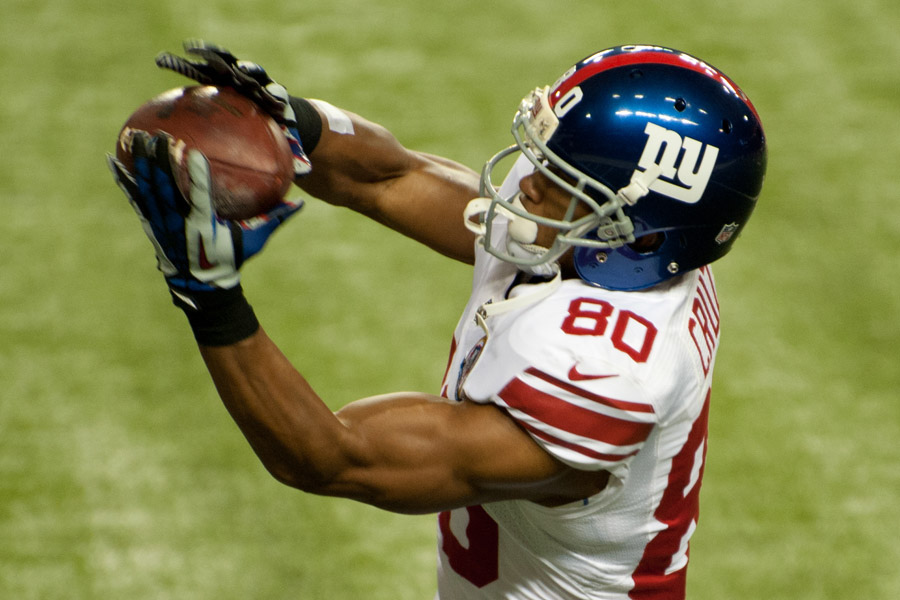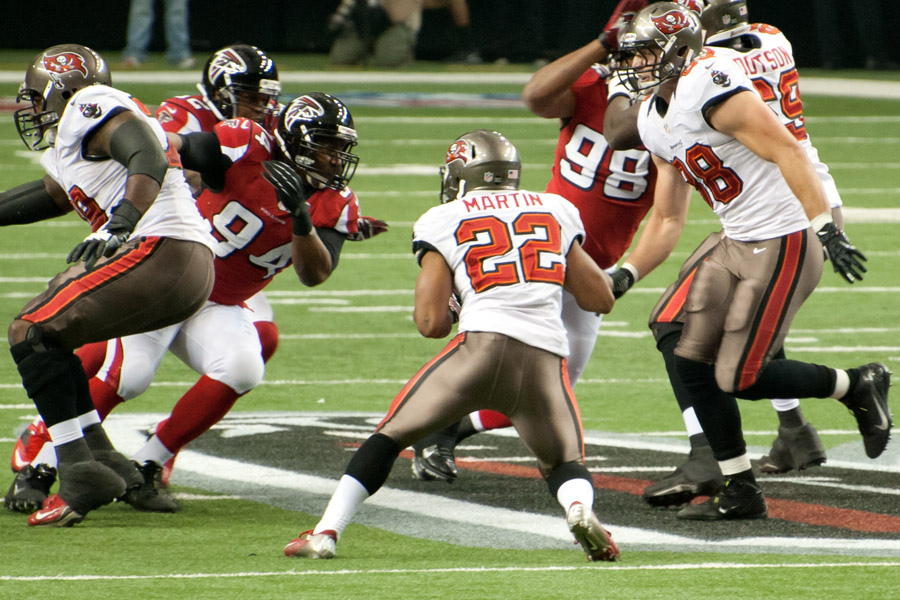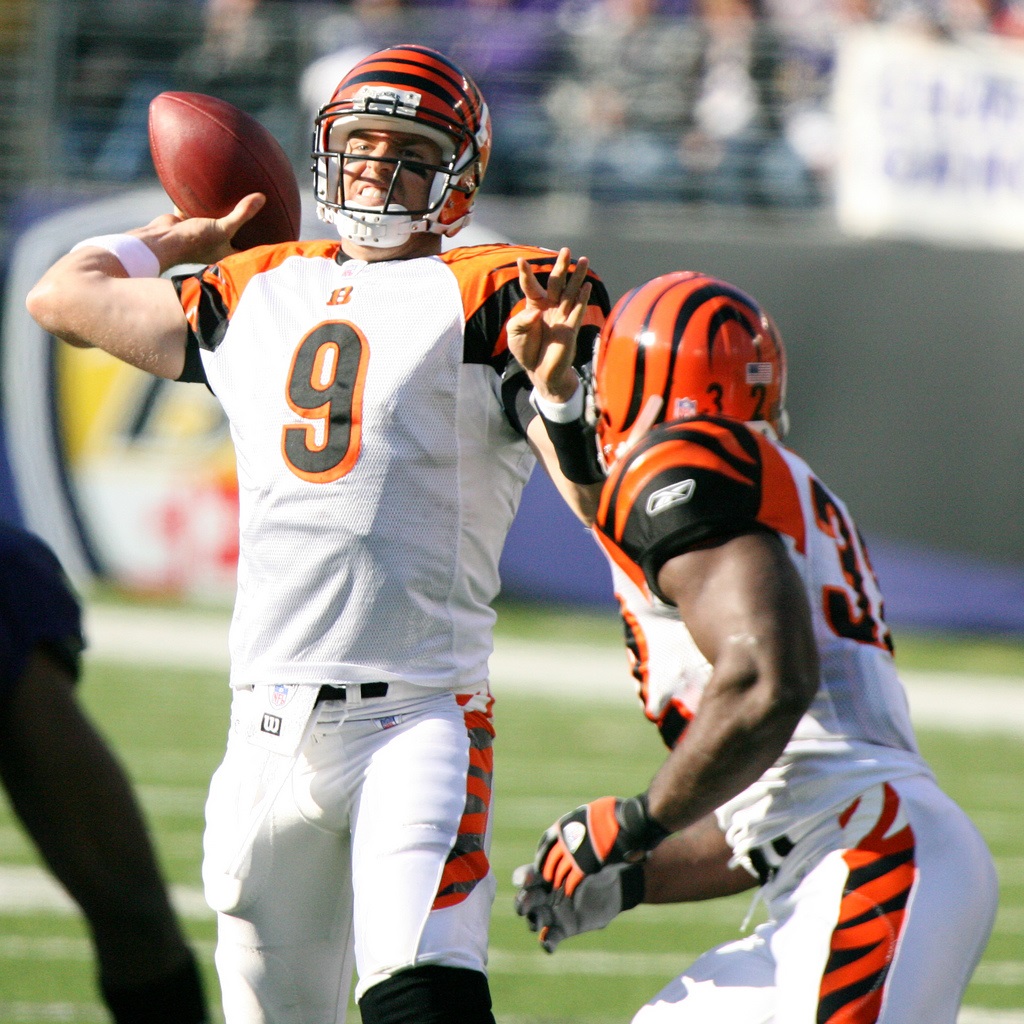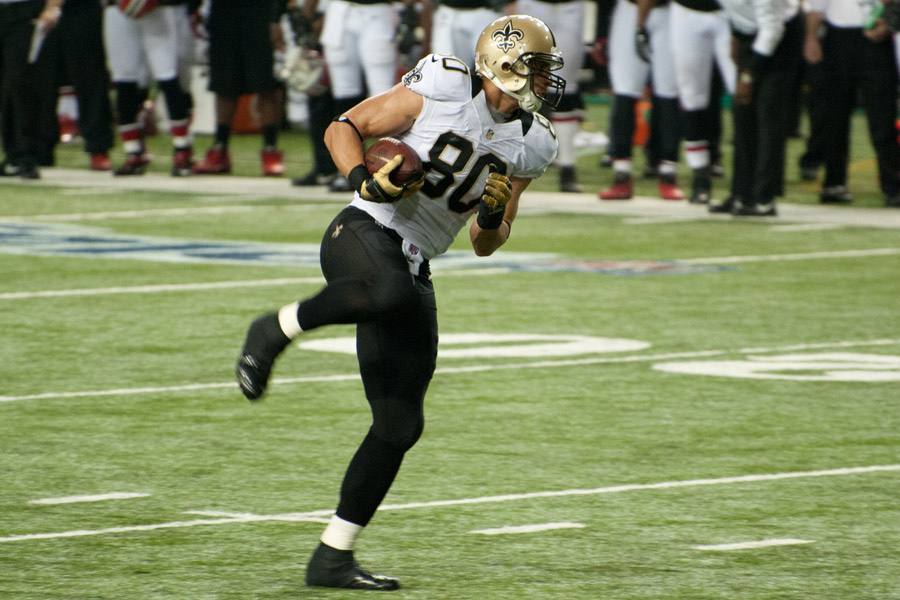
I’m 43 years old. Since I was 15, I’ve held 16 types of jobs with 9 different companies. I’m not counting the four soul-sucking hours I spent as a stock boy at a Winn-Dixie.
On my lunch hour at that job, I walked out the door and kept walking. Two miles later, I made a beeline to the manager’s office at the apartment complex where I grew up. The next morning I was collecting trash and cleaning the grounds.
Yeah, I would have rather hauled other people’s garbage and take a blower to a parking lot filled with pollen that made “sinus irritation” an understatement than to stand around a grocery store all day. There’s considerable irony to this story once you learn that my wife and daughter have an ongoing joke that the two grocery stores in town are my mistresses: Kroger my ‘around the way girl’ and Earth Fare my ‘hippy chick’. Other than work and home, these two places are where you can find me.
Good thing I wasn’t a star quarterback or the way I ended that job might earned this kind of headline:
NFL Draft Analyst calls star quarterback ‘unreliable.’ Cites behavior of quitting jobs without notice among evidence.
I’m only half-kidding. Although not a serious example of behavior that would even register amid the range of nitpicking stories on character that we read this time of year, it is an example of how a lack of context can alter the truth. A writer could easily speculate that a guy who walks off the job without notice is not the best candidate to lead a team.
Judging by what has been said about Cam Newton and Geno Smith, some writers relish a challenge. They examine smiles and facial expressions with the same fervor and methodology as tracking short shuttles and dissecting throwing motions. This is where their experiences as a football players fails them.
They fail to consider that the greatest amount of emotional maturation from childhood to adulthood happens between the ages of 16-25. This is when young people are given their first adult-level responsibilities. With new responsibilities comes new experiences.
And if you’ve been a human long enough, then you know that experience is the product of mistakes.
My career in the workplace didn’t start well. Between the ages of 16 and 21, I walked off three of my first five jobs without notice. I could provide a convincing argument that two of those three walkouts were based on extenuating circumstances. However at the end of the day, I didn’t give notice and that is on me.
If I was a star quarterback and a private investigation firm was looking into my behavior, they might report to a director of scouting that I was unreliable, unprofessional, and immature. If a general manager opted to use these three adjectives to describe me in this context during a phone call or email with a draft analyst, I might be labeled a character risk and potential bust.
But what if I told you that those jobs were taken so I could practice my craft of quarterbacking at the only time of day where I had access to the tools and resources to get better?
What if you knew I woke up at 4:30 a.m. each morning during the summers, worked this part-time job until 1:30 p.m., and then from 2:00 p.m. to 8:00 p.m., I practiced without fail?
What if I told you that the company hired me after I told them of my scheduling needs and it was only after several weeks or months that the company’s needs changed. Rather than hiring someone for those needs, they gave me an ultimatum to either switch my hours or walk out the door and not come back?
Was I immature or were my priorities based on developing the skills of my future job over being flexible to the new terms of my present one? While I wasn’t a star quarterback, I was a musician who couldn’t practice after 8:00 p.m. without disturbing neighbors and needed my nights free to perform with others.
Even if the right answer is still being flexible, context is important.
If I was a college quarterback and this was a question clouding my character, I could only hope that those team-hired investigators were thorough. Even then, I’d have to wonder if those teams wouldn’t use these questions as a bargaining tool to drive down my stock and ultimately the price of my rookie contract.
Around the same time a college quarterback would be making the transition to a professional career, I was making mine. A couple of years earlier, I stopped performing music and changed career paths. My next five jobs were part of a 12-year career with the same employer.
I began as an entry-level employee while in school. Within a year I was a part-time supervisor and by the time I finished college, I was an assistant manager. Over that four-year period between the final years of my college life and the early years of my full-time professional career, I had probably interviewed, hired, trained, and disciplined a few hundred employees.
I made my share of mistakes. I made poor hiring decisions and I mishandled issues with clients, employees, and customers. In hindsight, most of these mistakes happened because I was young, inexperienced, and often immature.

During my brief time covering football practices a couple of years earlier, I encountered a star running back who was also displaying his own youthful immaturity. He rarely made it to post-practice interviews during his career.
His teammates intimated to me that their teammate was not a guy to be counted on. I got a sense that they didn’t like him very much. It wasn’t what they said, but how they said it. They rolled their eyes, shook their heads, and made dismissive sighs when I asked if this lead dog of the Georgia football team would be coming to the assigned sessions.
What they would say in conjunction with their physical displays of dissatisfaction was He’s never on time. I also had a friend who had a class with the runner. He told me stories about this future first-round pick of the Arizona Cardinals, including how the back spent more time carving his name into the desk rather than listening to the teacher.
I had good info to write about his immaturity before he was drafted, but I didn’t think it was worth discussing. I knew lots of students who came to class hung over, slept through lectures, or did half-hearted work with their assignments and still transformed into quality professionals in their respective careers. Why should Garrison Hearst be any different?
For all I really knew, Hearst’s teammates liked him even if they didn’t like that he was often late or a no-show to after-practice press sessions. It’s not hard to imagine that Hearst cared more about football than an interview or an English class. During my 20’s I thought Hearst was a slacker, but 20 years later and with a lot more life experience and perspective, I have a different view. One of those experiences happened just a couple of years later.
Imagine being 22 or 23 and months away from earning a first-round contract with a professional football team. Better yet, imagine being 22, winning $5 million in the lottery, and going to work in a job that you don’t like. How difficult it must be to stay focused when what you’re doing won’t make a real difference in how you will earn the majority of your money?
Just like any of these prospects, we know the right answer: keep the straight and narrow. But it doesn’t change how difficult it is to maintain these priorities. Even if the fear of becoming academically ineligible during the season and watching one’s draft stock plummet might seem like a strong enough deterrent, it wouldn’t be easy.
I know it wouldn’t.
When I was 24 and two months from graduating from Georgia with dual majors in English and Spanish, my company promoted me to a full-time position at the time I was also headlong in a serious relationship with a woman who was moving in with me. That 500-level linguistics course that was 2.5 hours per session and taught in the native language by the head of the Spanish department three times a week was the lowest priority in my life.
I was in love. This was one of my last two classes. And I was getting paid.
And if you knew how little I was making, then you would realize the depths of my immaturity. I thought I could juggle it all. Only when I learned (all too late) that the final exam in this course had material on the front and back of each page did it hit me that I wasn’t thinking straight.
I failed the test, earned my first-ever D in the last class of my academic career, and settled for a major in English and minor in Spanish.
Someone I know and trust (and so do you if I told you who it was) with connections to a college program that has a marquee player entering this 2013 NFL class told me that this player barely emerged unscathed from a similar scenario. When I heard about this, I understood the difficulty of maintaining one’s focus and priorities. And he really is about to get paid!
This prospect is dedicated to learning the game of football, but he lacked the maturity to keep his academics from becoming a potential problem that could have hurt him and his team. This probably earned the ire of his teammates and coaches. It’s the type of situation that could have been leaked to the media in a way where a writer could deem the prospect as “not well-liked,” or “lacking a good work ethic.”
Would you take a chance on a player in his early 20’s who works his ass off in practice and the film room, but had issues balancing his priorities with the classroom? In the scheme of things, I’d say it’s non-issue.
It became a non-issue for me. My immaturity as a student and young employee wasn’t fatal to my career. My successes outweighed my failures and I eventually became an operations manager, then a director at this company.
I can safely estimate that by the time I transitioned from a career in management to a writing career, I had interviewed, trained, and managed thousands of people ranging from entry-level employees to middle management. I was one of the few people in our company’s history who had a dual role as an operations manager and primary client contact.
I wasn’t a corporate superstar, but I was good at my job. I bet my career experiences are no different from many of you reading this.
If you have at least 10 years of experience as a manager in an environment that is a mix of blue-collar and white-collar cultures then you have probably faced unusual situations in your jobs where the everyday priorities of production, efficiency, and quality paled in comparison:
- Bomb threats.
- Fist fights between entry-level employees.
- A broken windshield courtesy of a disgruntled former employee who was fired because I wouldn’t allow him to sexually harass employees.
- Workplace romances.
- Challenging and dysfunctional client relationships.
Despite the way I make it sound, most of my employees enjoyed working with me and these crazy situations above were rare events. Like most, the workplace has its headaches and if you’ve worked long enough then you’ve seen things you’d never think would happen.
It’s these experiences that add perspective about human nature. The capacity for a young adult to undergo a quick maturation is one of those major lessons.
Whether it’s the NFL, a blue-collar job, or Corporate America, there’s nothing like looking Career Death in the eye to grow up fast. It happens to everyone. What’s even more profound is when you are given the responsibility as Career Death Incarnate to a soon-to-be former employee.
One of my worst days as a manager came when I had to fire a young woman who was avoiding her assignments. Even when she was working, she mistreated customers. During her firing, this part-time employee told me she had been recently been diagnosed with a treatable form of cancer. She was afraid to tell her mother, who had also been diagnosed just months earlier.
Although paling in comparison to her situation, firing someone dealing with cancer was not a good day in my life.
As unbelievable as it seems, she dropped by the office a few weeks later to ‘thank me for firing her’. Apparently, our conversation motivated her to find a job in an environment better suited to her needs. She told her mother about her cancer and it brought them closer. It was a blessing for them – and a minor, but rare blessing that she took the time to share it with me.
The experience of getting fired helped her make changes in her life. Her mistakes put her on a road towards gaining the maturity needed to make her life more fulfilling. This maturation in the face of a career death – parallels what many young NFL players face.

I think Garrison Hearst stared Career Death in the eye a few times. The first-round pick of the Cardinals (third overall) had a rough start to his career. He drew the ire of Buddy Ryan, who once gave Hearst a wheelbarrow filled with sand to tote around practice after his rehab from a knee injury wasn’t going as fast as Ryan believed it should.
Eventually, Hearst had to fight is way from the bottom of the Bengals depth chart to split time with Kijana Carter. Even then he wasn’t offered a contract on par with Eric Bienemy. Hearst’s agent had to fight hard for the 49ers to even give Hearst a shot and when the former Georgia star began camp in San Francisco, Terry Kirby was the starter.
This all happened before Hearst had an ankle injury that was so bad – and complications during recovery that were even worse – that most players would have never seen a field again. Hearst’s experiences made him a battle-tested professional.
[youtube=http://youtu.be/5dgrjrp6jXE]
Physically, Hearst could have made this run early in his career but I believe the adversity he overcame made him mentally prepared to finish a 96-yard run in overtime.
But the maturity to be a prepared professional and a media-savvy one was something that Hearst never learned during his career. When asked about the idea of gays in the locker room, Hearst’s growth as a professional didn’t include dealing with people:
While I don’t like Hearst’s views (at that time of his life) and perhaps someday these views will (hopefully) pose a greater problem to a team, I’m more concerned about whether a player will show up to work on time and give 100 percent to his job.
If you’ve worked with or led a group of people, you learn that not every member of a team is likable or reliable in situations outside the job. However, when it comes to his specific job, there may be few who are better.
I can think of several examples from my work experiences. These were people who made youthful mistakes before their employment or even had major issues on the job, but grew up and became good at what they did:
- The trumpet player who removed his wedding ring before every gig, but was always on-time, demonstrated great range, and read everything right the first time.
- The short-order cook who would have gotten punched out by a customer if he had to ever deal with one, but never messed up an order and could balance multiple tickets at a time.
- A former employee, who had a DUI charge reduced and expunged from his record as a teen, but a creative, reliable, and resourceful analyst.
- A co-worker who was in a string of bad relationships and was once disciplined due to an inappropriate relationship with another co-worker that nearly got her fired before her career began, but eventually became a charismatic manager and teacher.
In a year or two, we might be able to add Christine Michael to this list. His displays of immaturity included sleeping through his Combine interviews. Still, it hasn’t kept me from ranking him within the tier of future starters in this running back class.
I have no doubt that he can mature into a reliable player with a long, productive career. I also have no doubt that he could get cut and never fulfill his talent. However, based on my experiences with young adults, I would rather count on the likelihood that a young man is going to make mistakes and learn from them. Even commenting on it is a dangerous game because the weight it adds to an evaluation can be heavier than warranted.
Even if you’re a pessimist you have to concede that people often mature just enough to compartmentalize their flaws. At the very least they become good at preventing their issues from bleeding into their work long enough to address the issues and overcome them. I know this was the case for me.
I shared my career history with you because I feel confident that my skills and experience have helped me become a decent judge of character. And if someone with my qualifications and experience is reticent to evaluate and judge a prospect’s personality and character when my available data is news clippings, press conferences, and second and third-hand reports, then why should anyone give credence to these assessments from other writers or television analysts who lack any real experience interviewing, managing, or leading adults?
Outside of well-documented problems involving drugs, alcohol, and violent crime, any members of media passing significant judgment on an NFL prospect’s character that changes the outcome of his evaluation – even if they are eventually proven correct – are making a foolish decision on principle.
The fact is unless we look these players in the eye, ask them the tough questions, and have past experience as managers living with a player’s behavior – better or worse – as our employees, then we don’t know.
Sometimes it’s okay to say, I don’t know.
For analysis of skill players in this year’s draft class, download the 2013 Rookie Scouting Portfolio available April 1. Prepayment is available now. Better yet, if you’re a fantasy owner the 56-page Post-Draft Add-on comes with the 2013 RSP at no additional charge. Best, yet, 10 percent of every sale is donated to Darkness to Light to combat sexual abuse. You can purchase past editions of the Rookie Scouting Portfolio for just $9.95 apiece.












